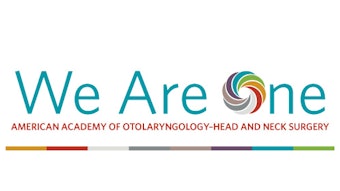Health Disparities in Geriatric Cochlear Implantation
Hearing loss is no longer considered a part of normal aging. The negative impact of hearing loss on mental, physical, and cognitive functioning has been well-documented in geriatric populations. Most notably, a recent study suggested hearing loss as a potentially modifiable risk factor responsible for 9 percent of dementia cases.
Janet S. Choi, MD, MPH, and Selena E. Briggs, MD, PhD, MBA
Hearing loss is no longer considered a part of normal aging. The negative impact of hearing loss on mental, physical, and cognitive functioning has been well-documented in geriatric populations. Most notably, a recent study suggested hearing loss as a potentially modifiable risk factor responsible for 9 percent of dementia cases.1 Although limitations still exist, diverse aural rehabilitation options are now available for older adults depending on the degree and type of their hearing loss. In the past 20 years, cochlear implantation (CI) has been well-established as a safe and effective option for many older adults experiencing moderate to profound hearing loss and not benefiting from conventional amplification.

Previous studies have shown significant improvement in speech perception among older CI recipients comparable to the performance of younger adults.2 Shorter duration of hearing loss prior to implantation was found to be a robust factor associated with better speech perception, suggesting the importance of earlier recognition of those who meet criteria within geriatric populations. Rates of surgical complications among older adults were equivalent to the rates among younger adults.3,4 Quality of life domains including self-esteem, social interaction, and physical activity have improved to even greater extents than in younger CI recipients.2,5 Impact of CI on cognitive functioning has not been fully established yet. However, studies with short-term follow-up at 6-12 months have suggested improvement in attention, executive function, and memory postimplantation.6-8 There are multiple studies currently ongoing to better understand the long-term impact of CI on cognition in older adults.
The criteria for CI for adults are ever evolving and broadening to encompass a greater degree of residual hearing. Per FDA-labeled indications, non-hybrid CIs are indicated for adults with severe to profound bilateral hearing loss (≥70 dB HL) who do not derive benefit from hearing aid use, scoring 40-50 percent or less on sentence recognition testing in the ear to be implanted and scoring 60 percent or less in the best-aided listening condition. Hybrid CIs are indicated for adults with residual low-frequency hearing sensitivity (< 60dB HL up to and including 500Hz) and severe to profound high-frequency sensorineural hearing loss (≥75dB HL at 2, 3, and 4kHz) in the worse hearing ear. There has been a recent expansion of FDA-labeled CI indication to single-sided deafness. Since its earlier approval in Europe in 2013, studies have demonstrated significant benefit in restoration of binaural functionality, improved quality of life, and attenuation of tinnitus after CI among adults with single-sided deafness.9,10 In July 2019 the FDA approved the labeling of MED-EL for use in candidates with asymmetrical hearing loss or single-sided deafness, defined as profound hearing loss and aided word recognition scores of less than 5 percent in the ear to be implanted.
Yet, CI remains underutilized with only 6-10 percent use among adults who may benefit from CI, and these numbers are expected to be even lower among geriatric populations with higher prevalence of moderate-to-severe hearing loss and less surgical care utilization.11,12 Unlike hearing aids, CI is covered by most healthcare plans. Private insurance, Medicare, and Medicaid cover non-hybrid CIs for those who meet the FDA indications. Hybrid CIs are also covered by most insurance plans and typically Medicaid. Coverage of CI for single-sided deafness currently varies by insurance plan, and some require patients to first try other technologies, including a hearing aid or a CROS system. Most insurance plans cover CI devices and related professional services, but it is important to note that there are multiple post-op visits and long-term aural rehabilitation requiring additional financial and social support for CI’s full benefit.
Interestingly, studies have observed significant sociodemographic disparities in CI by age, race, income, and rural/urban environment. A retrospective study examining adult CI recipients (mean age 61-62 years) in rural and urban settings in the United States demonstrated that the rural participants had a greater time interval from the onset of hearing loss to the time of CI at 36 years compared with urban-metro participants at 29 years.13 The rural participants reported a significantly longer commute to the CI center, lower average income, and lower percentage with private insurance coverage. This represents an opportunity for which telehealth may make a positive significant impact in the care of CI patients, compliance, and outcomes. Another retrospective study of adult CI recipients (mean age 61) demonstrated that nonwhite race and increased age were associated with increased time to CI.14 Nonwhite CI recipients were six times less likely to receive CI during each year of hearing loss as compared with white CI recipients. In addition to longer time to CI, poorer scores in post-CI quality of life measures were associated with lower socioeconomic status. A multicenter cross-sectional study of adult CI recipients (mean age 60) reported that having lower household income was associated with lower CI-specific quality of life scores in communication, environment, and social domains.15
The safety and efficacy of CI have been well-established among older adults who meet the criteria and have access to a CI center. CI technology has been continually evolving to provide FDA-approved CI devices for older adults with various degrees of hearing loss. Both private insurance and Medicare/Medicaid provide a robust reimbursement policy across the nation. Still, the literature suggests that a majority of older CI candidates do not receive CI and that there is a significant delay to referral and implantation even among the few who receive CI. While there is a need for continuing research to better improve our current CI technology and understand the long-term outcomes, it is also time to consider those older CI candidates in the community suffering from hearing loss. There are multiple support programs and policies established to promote hearing care that focus on CI in the pediatric population. There is an opportunity for increased support programming and policy focusing on the adult—and geriatric, specifically—population. Future studies are needed to better understand risk factors associated with delay in referral for CI in older adults outside clinic and ways to improve access to CI among minority, low-income, and rural populations. There should be greater organizational effort partnering with our primary care colleagues to promote awareness among geriatric populations that hearing loss does not have to be part of their aging process.
References
- Livingston G, Sommerlad A, Orgeta V, et al. Dementia prevention, intervention, and care. Lancet. 2017;390(10113):2673-2734.
- Yang Z, Cosetti M. Safety and outcomes of cochlear implantation in the elderly: A review of recent literature. J Otol. 2016;11(1):1-6.
- Wong DJ, Moran M, O’Leary SJ. Outcomes after cochlear implantation in the very elderly. Otol Neurotol. 2016;37(1):46-51.
- Chen DS, Clarrett DM, Li L, Bowditch SP, Niparko JK, Lin FR. Cochlear implantation in older adults: long-term analysis of complications and device survival in a consecutive series. Otol Neurotol. 2013;34(7):1272-1277.
- Olze H, Grabel S, Forster U, et al. Elderly patients benefit from cochlear implantation regarding auditory rehabilitation, quality of life, tinnitus, and stress. Laryngoscope. 2012;122(1):196-203.
- Mosnier I, Bebear JP, Marx M, et al. Improvement of cognitive function after cochlear implantation in elderly patients. JAMA Otolaryngol Head Neck Surg. 2015;141(5):442-450.
- Sonnet MH, Montaut-Verient B, Niemier JY, Hoen M, Ribeyre L, Parietti-Winkler C. Cognitive abilities and quality of life after cochlear implantation in the elderly. Otol Neurotol. 2017;38(8):e296-e301.
- Miller G, Miller C, Marrone N, Howe C, Fain M, Jacob A. The impact of cochlear implantation on cognition in older adults: a systematic review of clinical evidence. BMC Geriatr. 2015;15:16.
- Vlastarakos PV, Nazos K, Tavoulari EF, Nikolopoulos TP. Cochlear implantation for single-sided deafness: the outcomes. An evidence-based approach. Eur Arch Otorhinolaryngol. 2014;271(8):2119-2126.
- Arts RA, George EL, Stokroos RJ, Vermeire K. Review: cochlear implants as a treatment of tinnitus in single-sided deafness. Curr Opin Otolaryngol Head Neck Surg. 2012;20(5):398-403.
- Zeng FG. Trends in cochlear implants. Trends Amplif. 2004;8(1):1-34.
- Sorkin DL. Cochlear implantation in the world’s largest medical device market: utilization and awareness of cochlear implants in the United States. Cochlear Implants Int. 2013;14 Suppl 1:S4-12.
- Hixon B, Chan S, Adkins M, Shinn JB, Bush ML. Timing and impact of hearing healthcare in adult cochlear implant recipients: a rural-urban comparison. Otol Neurotol. 2016;37(9):1320-1324.
- Dornhoffer JR, Holcomb MA, Meyer TA, Dubno JR, McRackan TR. Factors influencing time to cochlear implantation. Otol Neurotol. 2020;41(2):173-177.
- McRackan TR, Hand BN, Velozo CA, Dubno JR. association of demographic and hearing-related factors with cochlear implant-related quality of life. JAMA Otolaryngol Head Neck Surg. 2019;145(5):422-430.















